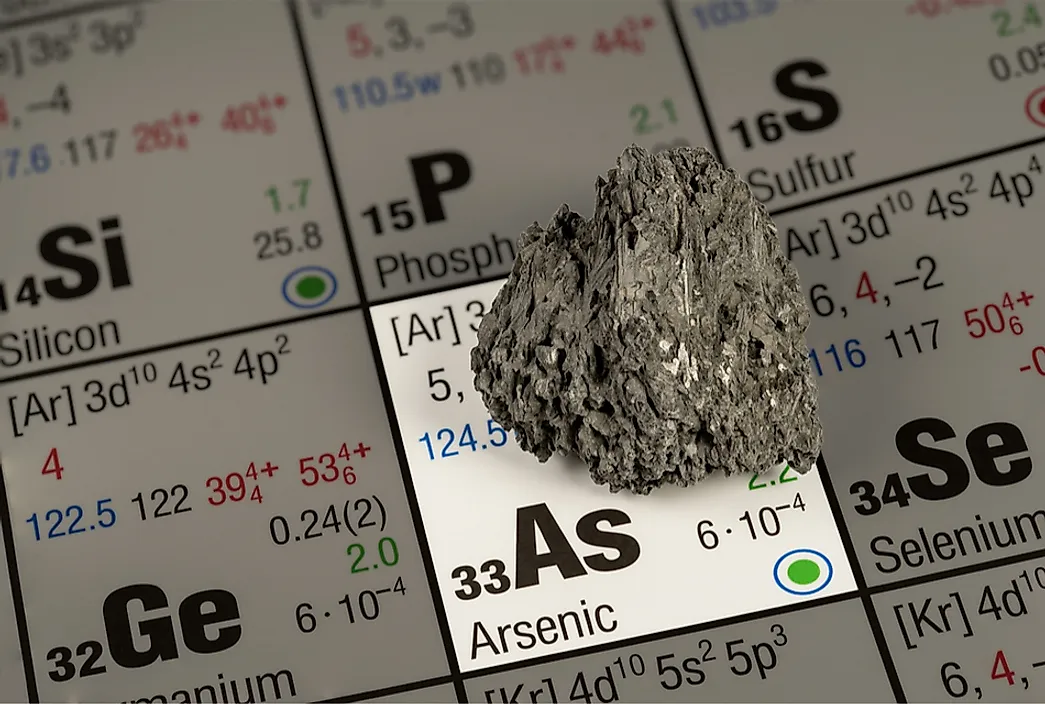What Are the Effects of Arsenic Poisoning?

Arsenic is an element that occurs naturally either in a pure form or as a compound. While minute amounts of the element are thought to form a necessary component in the diets of many mammals, it is also toxic when consumed in even small quantities, resulting in arsenic poisoning. Arsenic has been used for centuries as a poison and was the preferred poison for inflicting capital punishment in Korea’s Joseon Dynasty. The diagnosis of arsenic poisoning involves collecting blood and urine samples from an affected person. Hair and fingernails are other bio-indicators used in the diagnosis of arsenic poisoning
Causes of Arsenic Poisoning
The most common cause of arsenic poisoning is drinking contaminated water. In some parts of the world, groundwater sourced from shallow aquifers is laden with arsenic. The regions worst hit by arsenic poisoning from groundwater include West Bengal and Bangladesh. Hundreds of wells were sunk in these regions to solve water shortage problems that the populations had experienced for many years. However, feasibility studies conducted before sinking the wells failed to identify the presence or absence of arsenic in the groundwater. The resultant contaminated water exposed millions of people to arsenic poisoning. The issue is compounded by the lack of alternative water sources in the region, and the majority of inhabitants live below the poverty line and cannot afford to purchase bottled water.
Effects of Arsenic Poisoning
Numerous health effects, ranging from fevers to comas and death, have been linked to arsenic poisoning. Some immediate effects of poisoning include drowsiness, headaches, and diarrhea. Cardio-vascular diseases related to hypertension are linked to arsenic poisoning, as well as a range of cerebrovascular diseases. The effects that manifest on the skin include the discoloration of the skin, skin lesions, skin thickness, and ultimately skin cancer. The effects of arsenic poisoning are also evident in pregnant women, who are classified as a high-risk population. Arsenic poisoning puts the health of both pregnant women and their unborn infants at significant risk in the prenatal and postnatal period. Diarrhea, abdominal aches, skin discoloration, and cancer are some of the effects that arsenic poisoning has on pregnant women. Higher levels of infant mortality have been recorded in regions affected by arsenic poisoning. The rate of infant mortality is directly proportional to the level of arsenic poisoning that pregnant women are exposed to. Additionally, exposure to arsenic can lead to the birth of infants, with a wide range of congenital disabilities.
Treatment of Arsenic Poisoning
The most effective medication for treating arsenic poisoning is the administration of dimercaprol. Also known as BAL, the medication is excellent in isolating arsenic from blood proteins, and is also used in treating poisoning from other metals such as lead and mercury. The medication is administered through an intramuscular injection. However, the medication comes with numerous side-effects, the most significant of which is high-blood pressure. Other side-effects of dimercaprol include fever and vomiting. The treatment of dimercaprol is affordable in the United States, as it costs about $200 for a full course of treatment.











